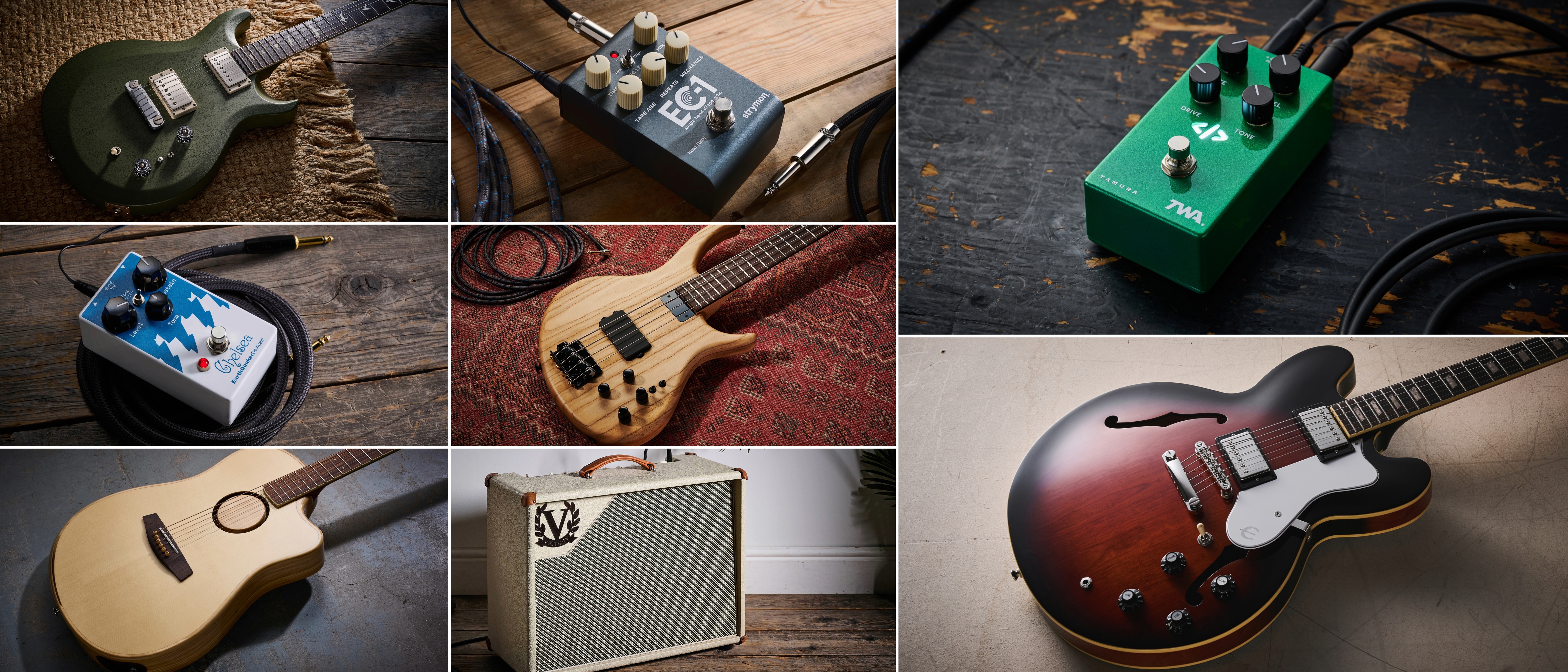Best ukuleles for beginners 2025: top picks from soprano to tenor
The best beginner ukuleles from Fender, Epiphone, Martin, Kala, Gretsch and more – prices starting from $30
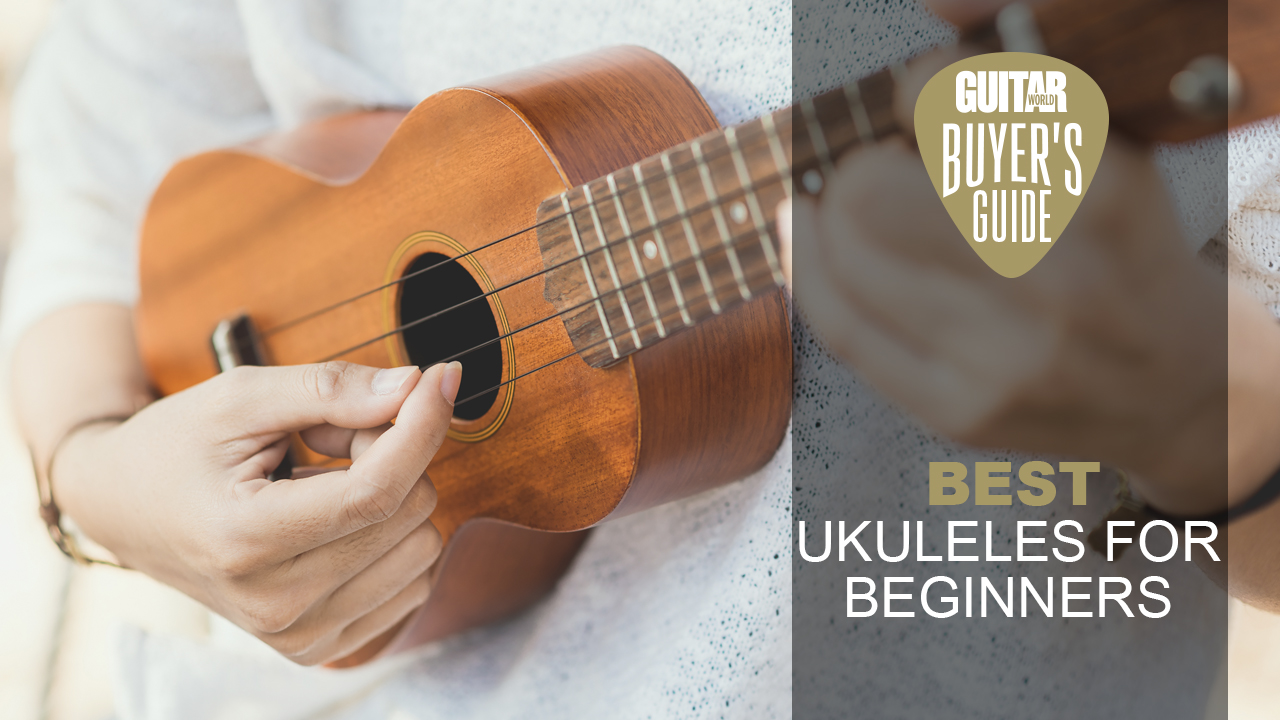
Over the past few years, the popularity of the ukulele has skyrocketed and as an instrument for younger players and beginners, it's an excellent way to get your foot on the musical ladder. The best ukuleles for beginners provide a great way to start playing chords and learning scale shapes, all while being fun and easy on the fingers.
It's much more straightforward to learn the uke versus a guitar, as you have fewer strings to worry about learning. The frets are closer together which makes chord shapes and general playing easier, while the nylon strings are easy to press down versus a steel-string acoustic guitar. Add in their small, portable size and you've got the perfect companion for a musical journey.
If you'd like to learn more about the ukulele before you buy or have some unanswered questions, then go check out our FAQs section which has loads of useful knowledge to arm yourself with. To see our top picks, just keep scrolling...
Our top picks
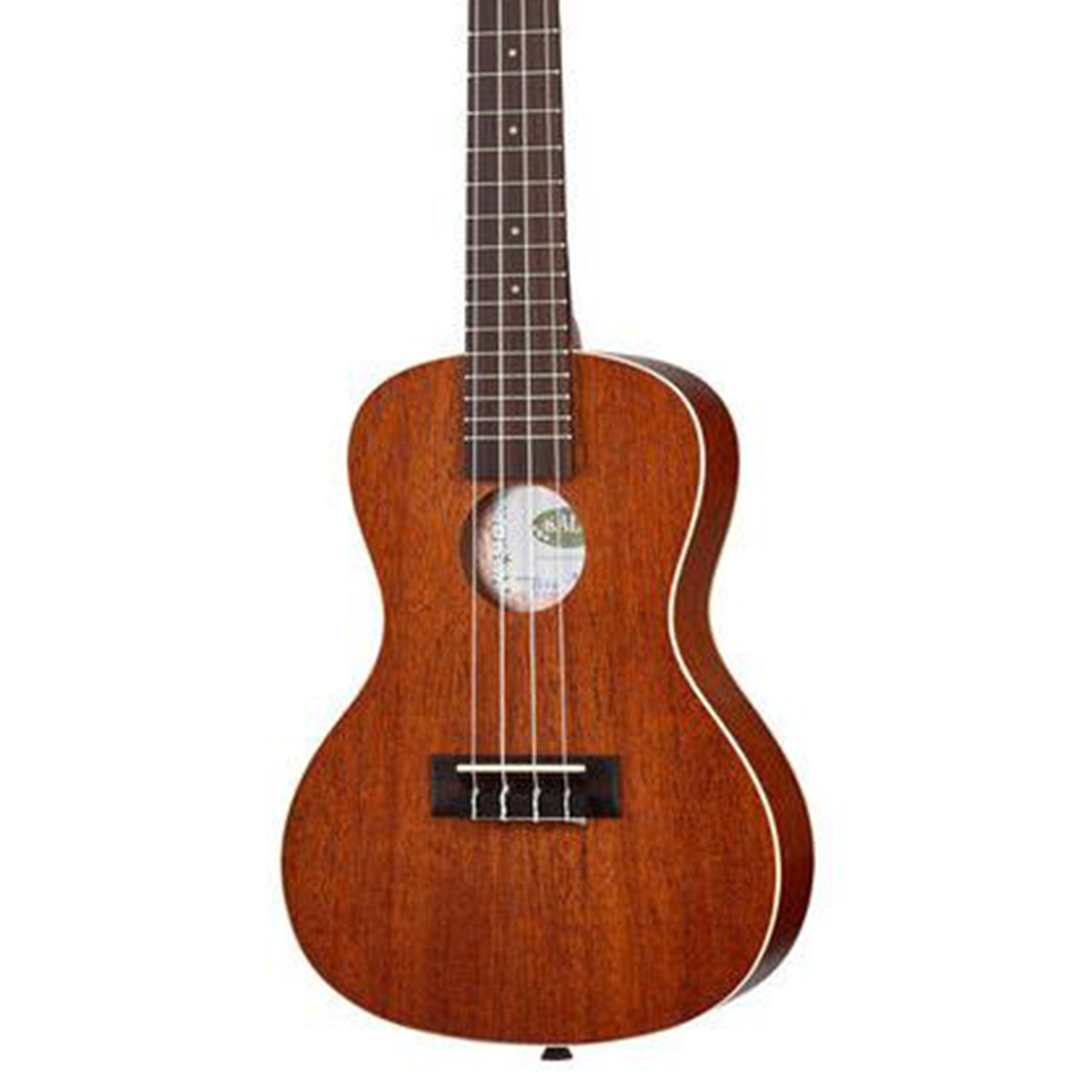
The Kaa KA C RW Mahogany Concert hits the sweet spot, both in terms of pricing and sound, with a mahogany body and neck, rosewood fingerboard and Graph Tech nut, all for around the $/£100 mark. As you'd expect from the construction, it sounds very clear and direct with good projection.
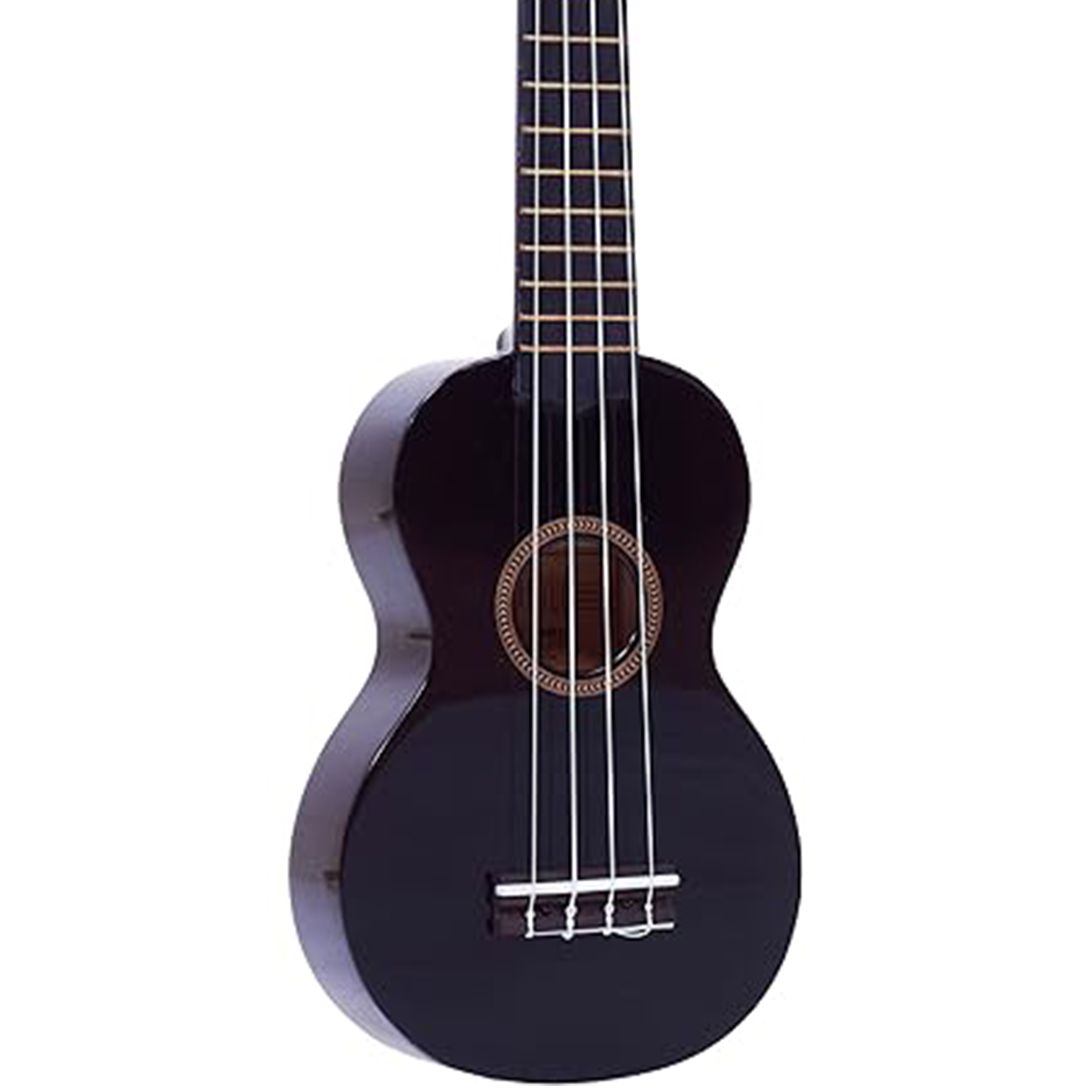
With a low barrier of entry, the Mahalo MR1 is an ideal option for testing the water with any young, budding musician. However, don’t be fooled by the price tag, the MR1 is no mere toy. The tuning pegs are capable of holding the tuning steady, while the handy travel bag makes traveling to lessons with it a breeze.
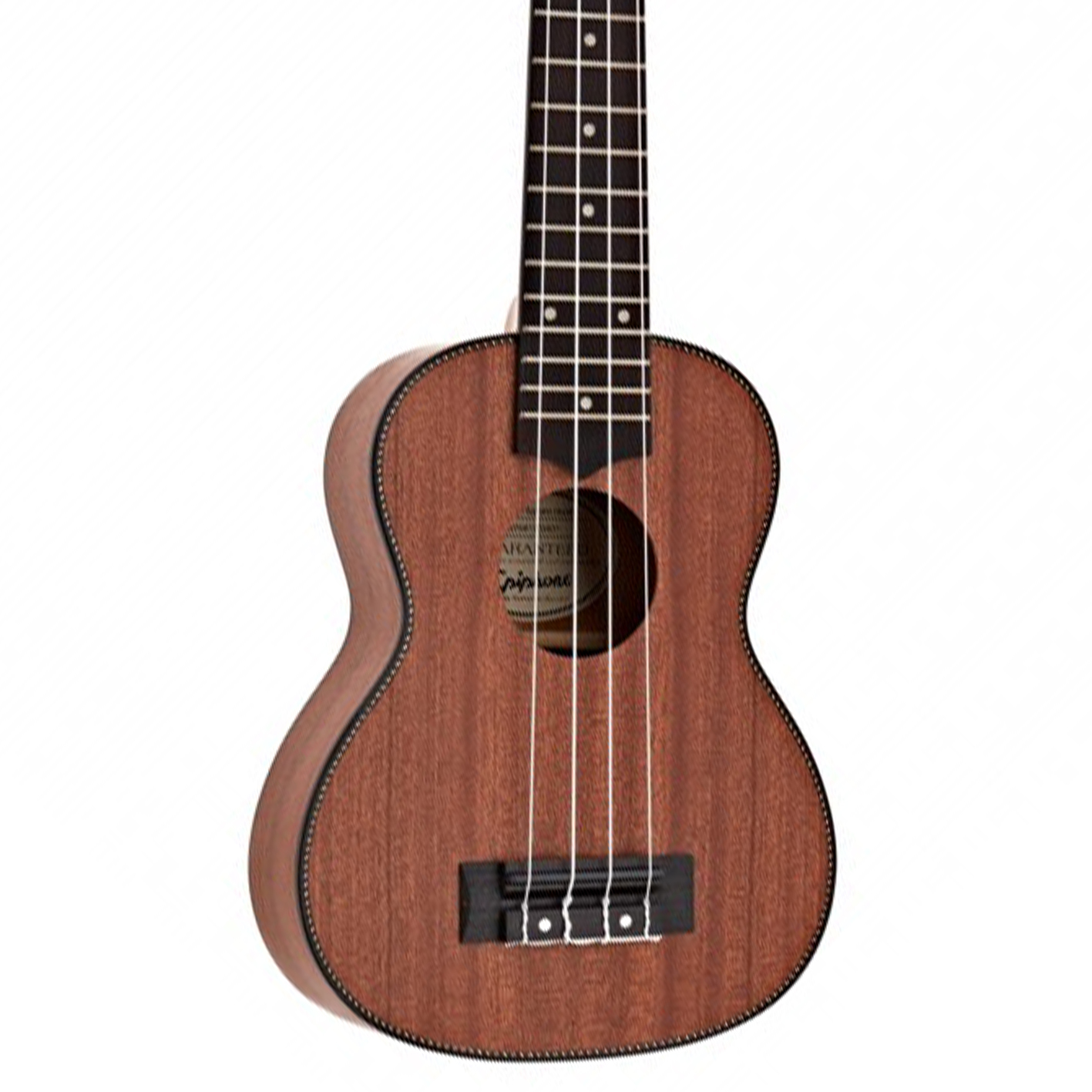
This is an unashamedly budget instrument from Epiphone, designed from the ground up to be thrust into the hands of beginners. It even ships with a handy chord chart. For the money, it's one of the best beginner ukuleles around. It's all-mahogany tone punches well above its weight, fretwork is tidy, intonation is good, and it's neatly put together.
Best overall

1. Kala KA C RW Mahogany Concert
Our expert review:
Specifications
Reasons to buy
Reasons to avoid
Kala is a big name in the ukulele game, with a vast range that covers every base from beginner to expert player. It's certainly a brand you can trust to deliver instruments built to a good standard, even at the lower price points.
Its KA C RW Mahogany Concert hits the sweet spot, both in terms of pricing and sound. You get a mahogany body and neck, rosewood fingerboard and Graph Tech nut, all for around the $/£100 mark. As you'd expect from the construction, it sounds very clear and direct with good projection.
It looks rather smart too, with its satin finish and classic cream binding. This is a ukulele that successfully demonstrates why it's worth spending that little bit more than entry-level prices.
Best for kids
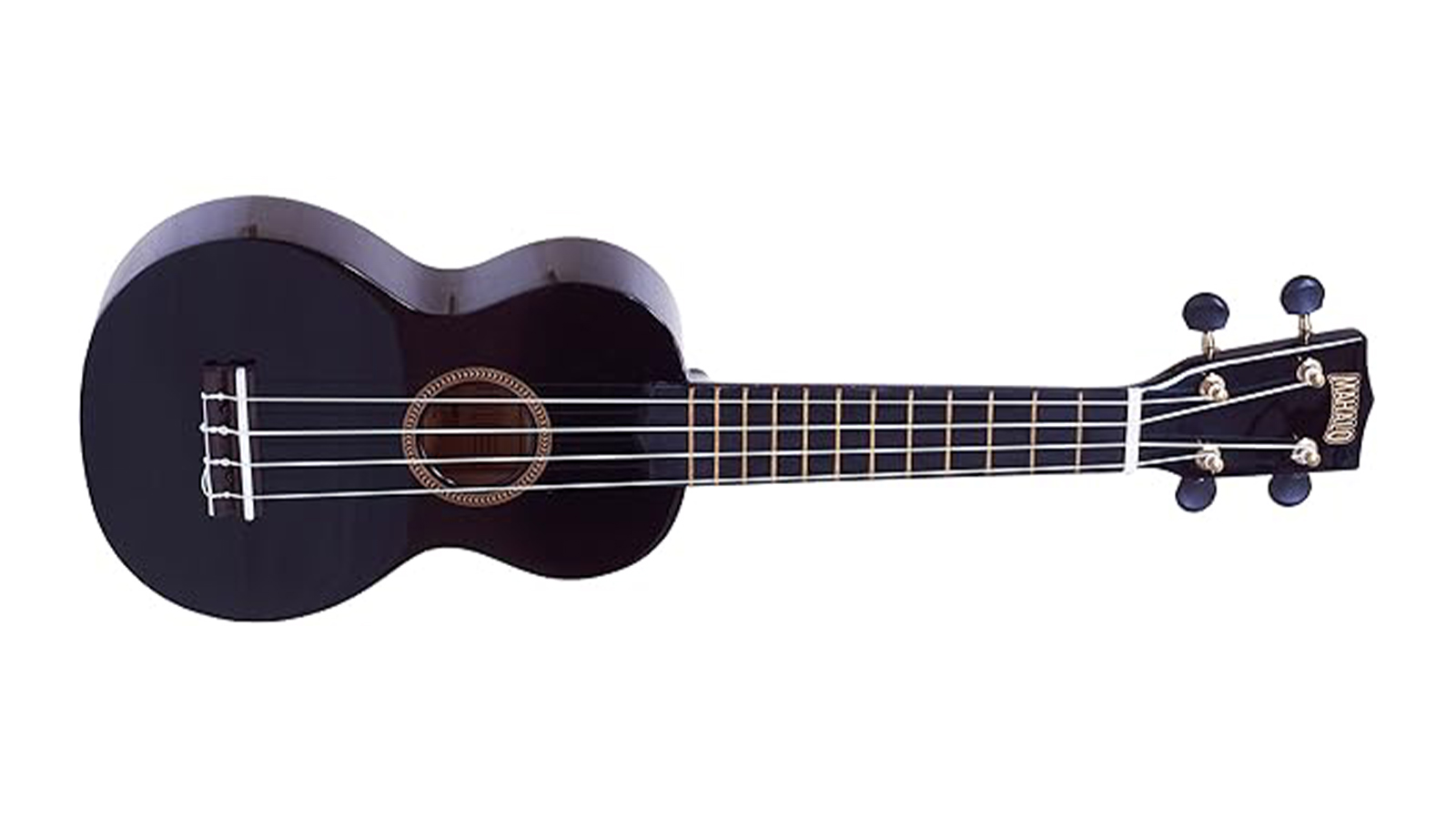
2. Mahalo MR1 Soprano Ukulele
Our expert review:
Specifications
Reasons to buy
Reasons to avoid
If your little one keeps getting precariously close to your guitar and has expressed an interest in playing an instrument, the ukulele is a great route to go down. With a low barrier of entry, the Mahalo MR1 is an ideal option for testing the water with any young, budding musician. Costing around $/£30 the MR1 has a ludicrously small price tag, meaning if they don’t quite take to it, your bank account won’t be wounded beyond repair.
However, don’t be fooled, the MR1 is no mere toy. Where other affordable ukes stumble, the MR1’s tuning pegs are capable of holding the tuning steady, hurrah! The MR1 is also available in a cornucopia of fantastic finishes and the handy travel bag makes traveling to lessons with it a breeze.
Mahalo has also strung the MR1 with Aqua Nylgut strings, a sign of their earnest commitment to providing young beginners with an instrument capable of learning on. Although the committed beginner will likely outgrow the MR1 rather quickly, it is a great option for those wanting to find their feet.
Best budget
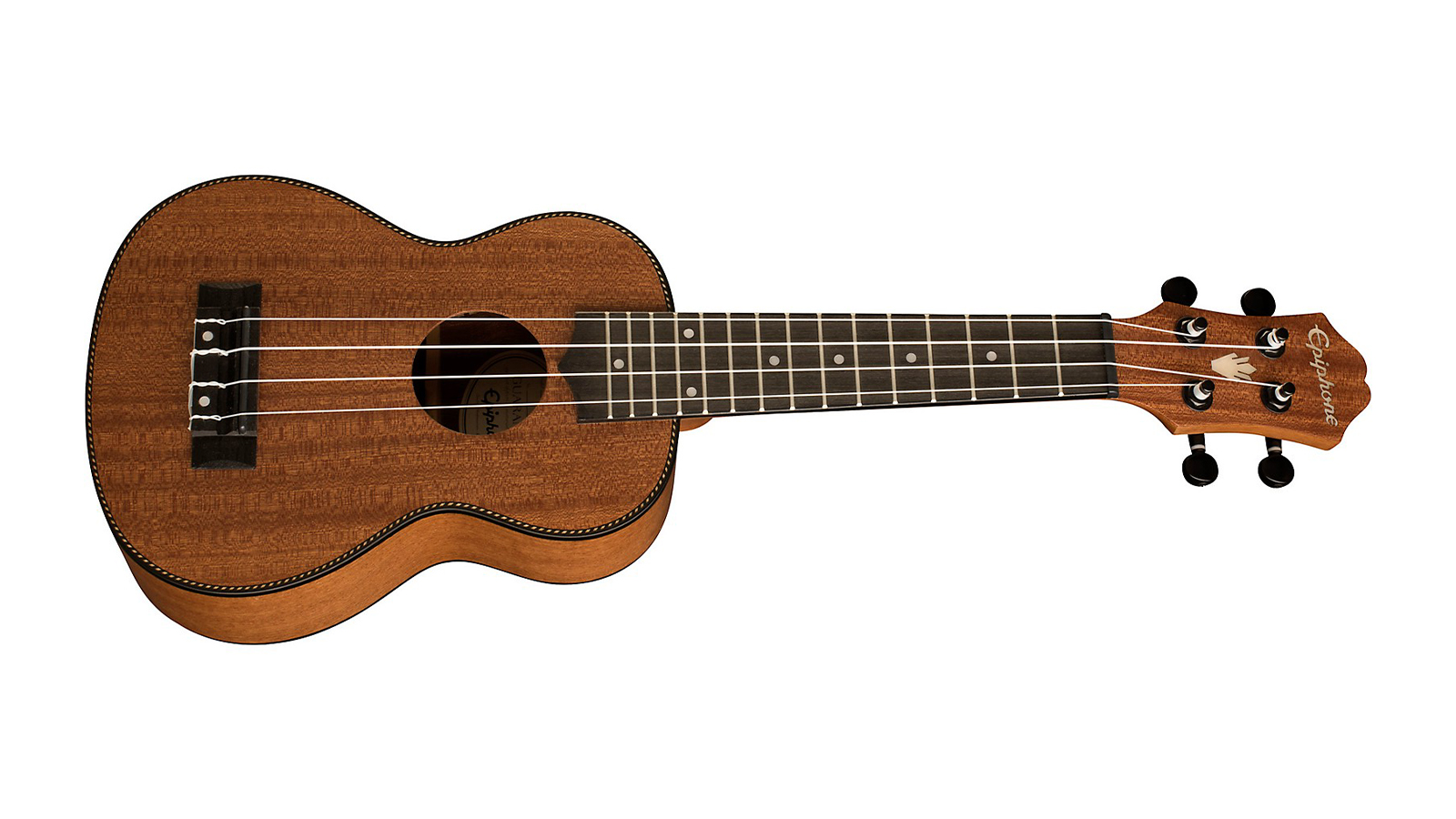
3. Epiphone EpiLani Soprano Ukulele
Our expert review:
Specifications
Reasons to buy
Reasons to avoid
Back in the day, Epiphone used to make world-class guitars that were right up there with the very best. More recently, (well, over the past 60 years, since it was bought by Gibson) it's earned a reputation for building world-class inexpensive guitars that are, in the main, every bit as good as its pricey rivals pretend to be.
Epiphone is the guitar brand of the people. Inexpensive instruments that are built like a Lexus, look like a Jaguar and play as fast and smooth as a Tesla.
The EpiLani shares all of these values. This is an unashamedly budget instrument from Epiphone, designed from the ground up to be thrust into the hands of beginners. It even ships with a handy chord chart.
For the money, it's one of the best beginner ukuleles around. It's all-mahogany tone punches well above its weight, fretwork is tidy, intonation is good, and it's neatly put together.
There's an awful lot of rubbish out there at this price point, but if you're on a tight budget then this is a good choice.
Best premium
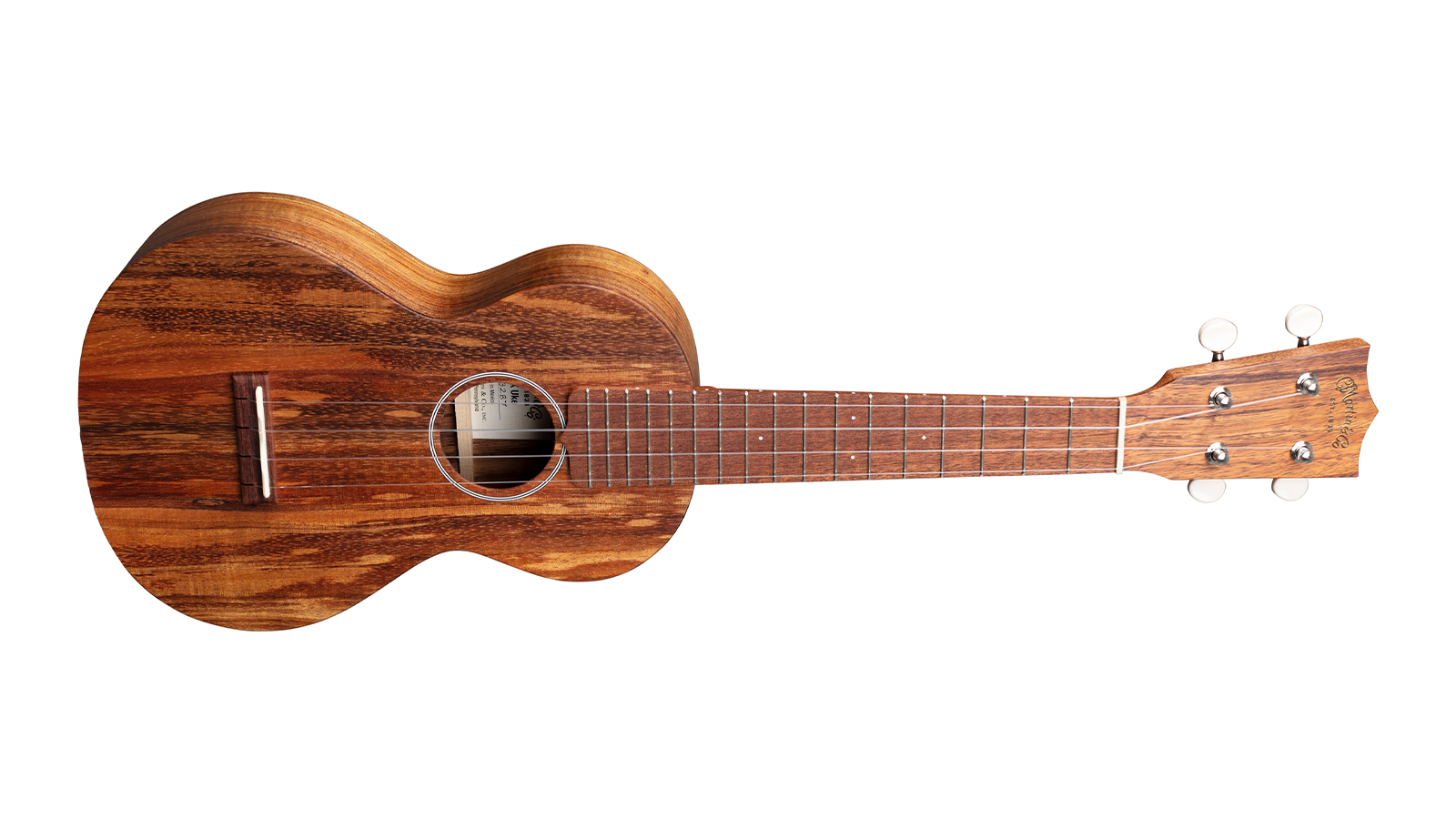
4. Martin Concert Ukulele
Our expert review:
Specifications
Reasons to buy
Reasons to avoid
OK, we admit it. Perhaps we're taking the 'buy well, buy once' ideology to extremes here but bear with us.
Why should beginners be cursed with cheap, awful, unplayable 'starter' instruments? Who propagates cynical nonsense such as 'all the gear, no idea'? We should all be free to buy whatever we can afford, without the fear of jealousy-fuelled judgement.
Of course, affordability is an issue for almost all of us, which is why we've included eight very good instruments at a broad range of price points in this buyer's guide. But we shouldn't ignore the top end.
Not all beginners are cash-strapped youngsters. It's common for those facing retirement to take up an instrument because they finally have the time. Sometimes, they have the disposable income too. So, this choice is for them.
The Martin Concert Uke FSC is a premium instrument for those who value craftsmanship and the environment. Every piece of mahogany used in its construction is sustainably sourced, as it should be.
There's very little decoration on show, it's rather a plain looking instrument, but the investment has been made in quality tonewoods and build, not bling.
This is a beautiful, understated uke that sends out all the right messages. Maybe it really is the only ukulele you will ever need – what could be more sustainable than that?
Best for gigs
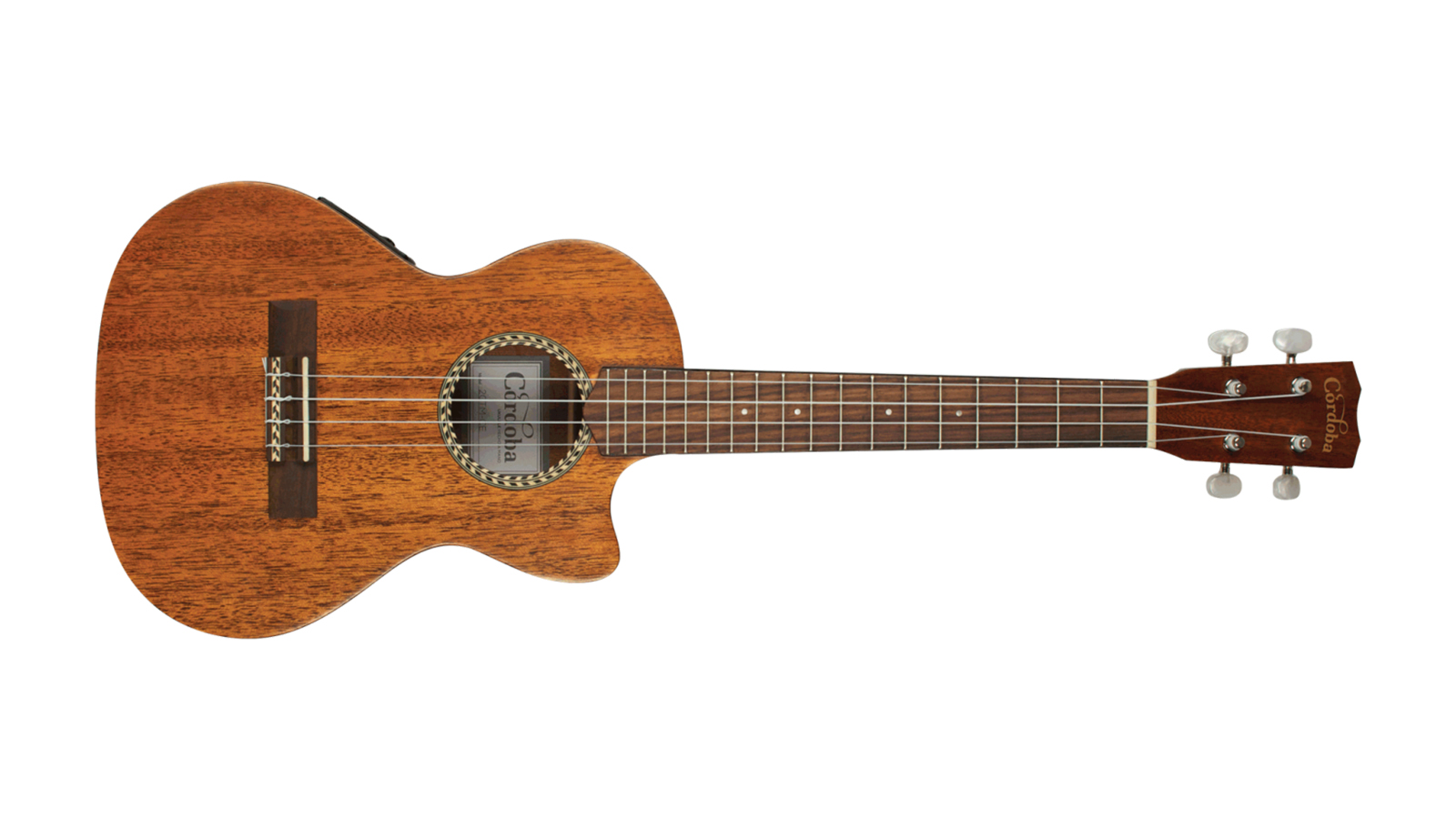
5. Cordoba 20TM-CE Tenor Ukulele
Our expert review:
Specifications
Reasons to buy
Reasons to avoid
Cordoba's mission has always been to make nylon string acoustic guitars cool again. It may appear to be an old company, steeped in heritage, but it was only founded in 1997. Since then, it's been successfully luring steel string players – both acoustic and electric – to its superbly built nylon strung guitars.
The point being? Well, this is a company that knows about craftsmanship, it knows how to build lightly constructed instruments that resonate beautifully. And, it has its finger on the pulse.
Ukulele construction is very, very similar to classical guitar construction. So, who are you going to trust to build yours? A company that usually screws together weighty electrics and now markets cheap ukes as a side-line, or the luthiers at Cordoba?
The 20TM-CE is more expensive than some other ukuleles in this buyer's guide but then it is completely handmade with a solid mahogany top, back and sides. It has a built-in undersaddle Piezo pickup and Belcat electronics, ready for when you're ready for your first stage performance.
It's also a thing of beauty.
Best vintage
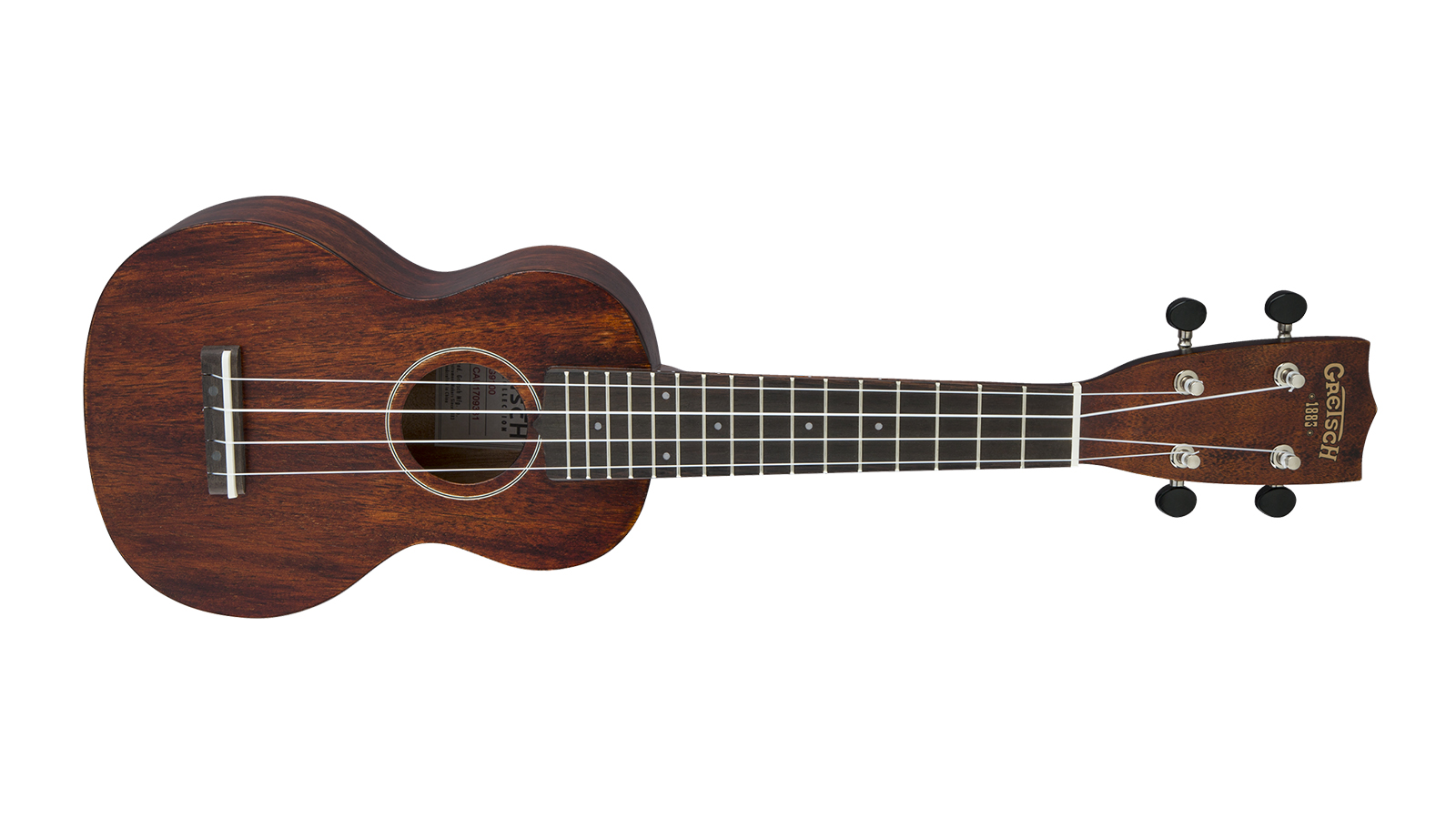
6. Gretsch G9100 Std Soprano Ukulele
Our expert review:
Specifications
Reasons to buy
Reasons to avoid
This is a fantastic little uke for throwing in the back of your car and just speeding off, seeing where life will take you. What is it about Gretsch? It seems to ooze more vintage cool, more authentic heritage, than almost any other brand out there. And this little uke has been soaked in a good dollop of the stuff.
Its authentic good looks are matched by an equally authentic tone. Mahogany is a great choice here. Soprano ukuleles can sound weak, subdued and top-end heavy, but the mahogany just punches through with its powerful, focused midrange and lack of harsh, ringing overtones.
Not one for chunky fingers, but nevertheless a powerful little beast that will look and sound the part in any folk, country or bluegrass setting. Hang that, we'd take it anywhere…
More options...
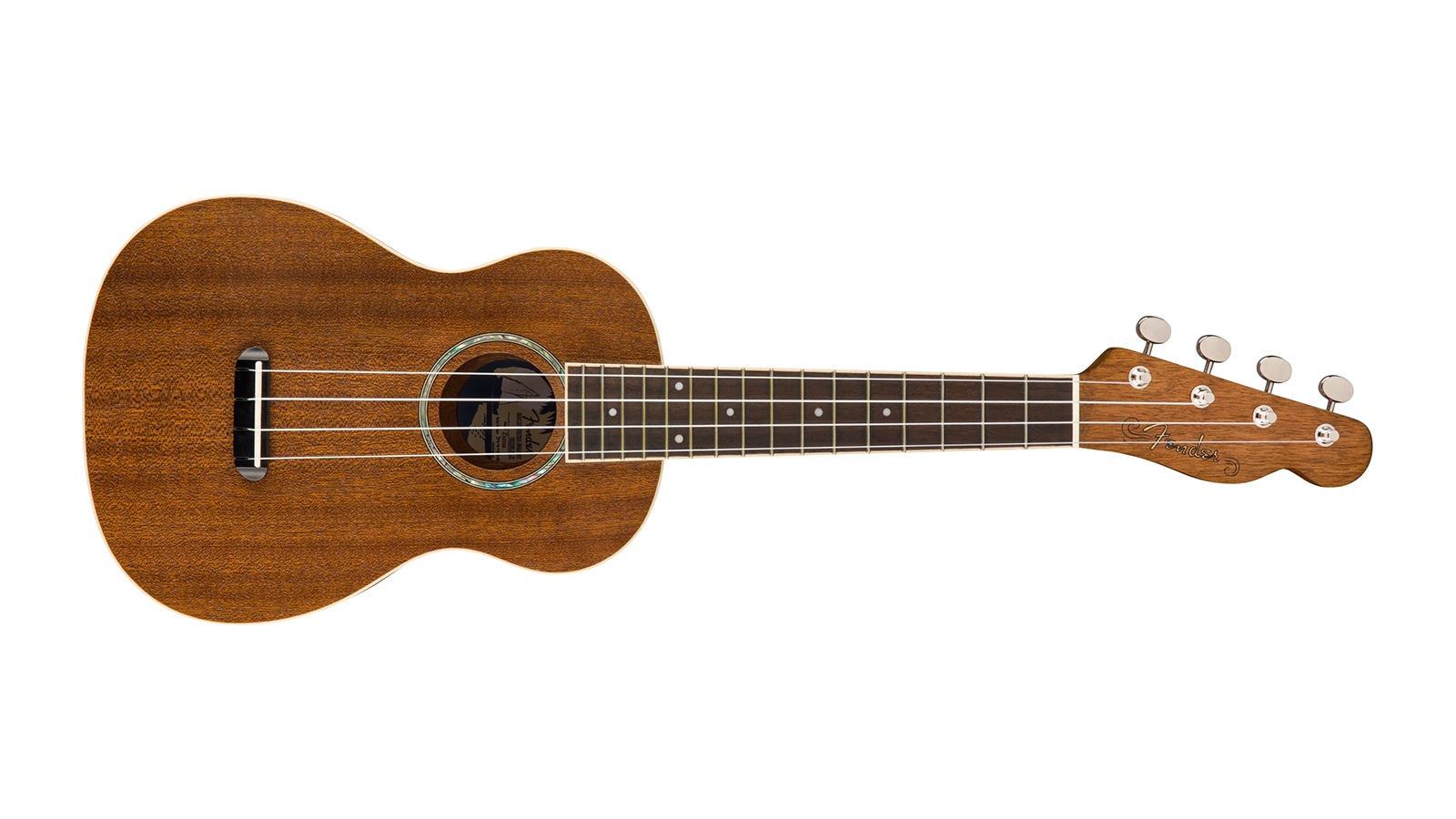
7. Fender Zuma Concert
Our expert review:
Specifications
Reasons to buy
Reasons to avoid
Fender makes all manner of ukuleles and is possibly best known for its models that mimic the looks of its classic Strat, Jazzmaster and Tele guitars. Call us boring if you like, but they seem a little ostentatious to us (but great fun!). We prefer the traditional look of the Zuma, with its classy sapele body and abalone rosette.
It can do humor too, just take a look at the Tele style headstock complete with inline tuners, or the tongue-in-cheek versions in vintage Fender colors Lake Placid Blue and Burgundy Mist.
Looks aside, the Zuma is a strongly built, well specified ukulele with a rich tone that balances both warmth and clarity in a very pleasing way. Its excellent sound and concert size lends this uke to fingerstyle, as well as hearty strumming.
We can see this little uke being casually strummed on its namesake Zuma beach in Malibu or played with more proficiency in the studio. A versatile beginner ukulele for sure.
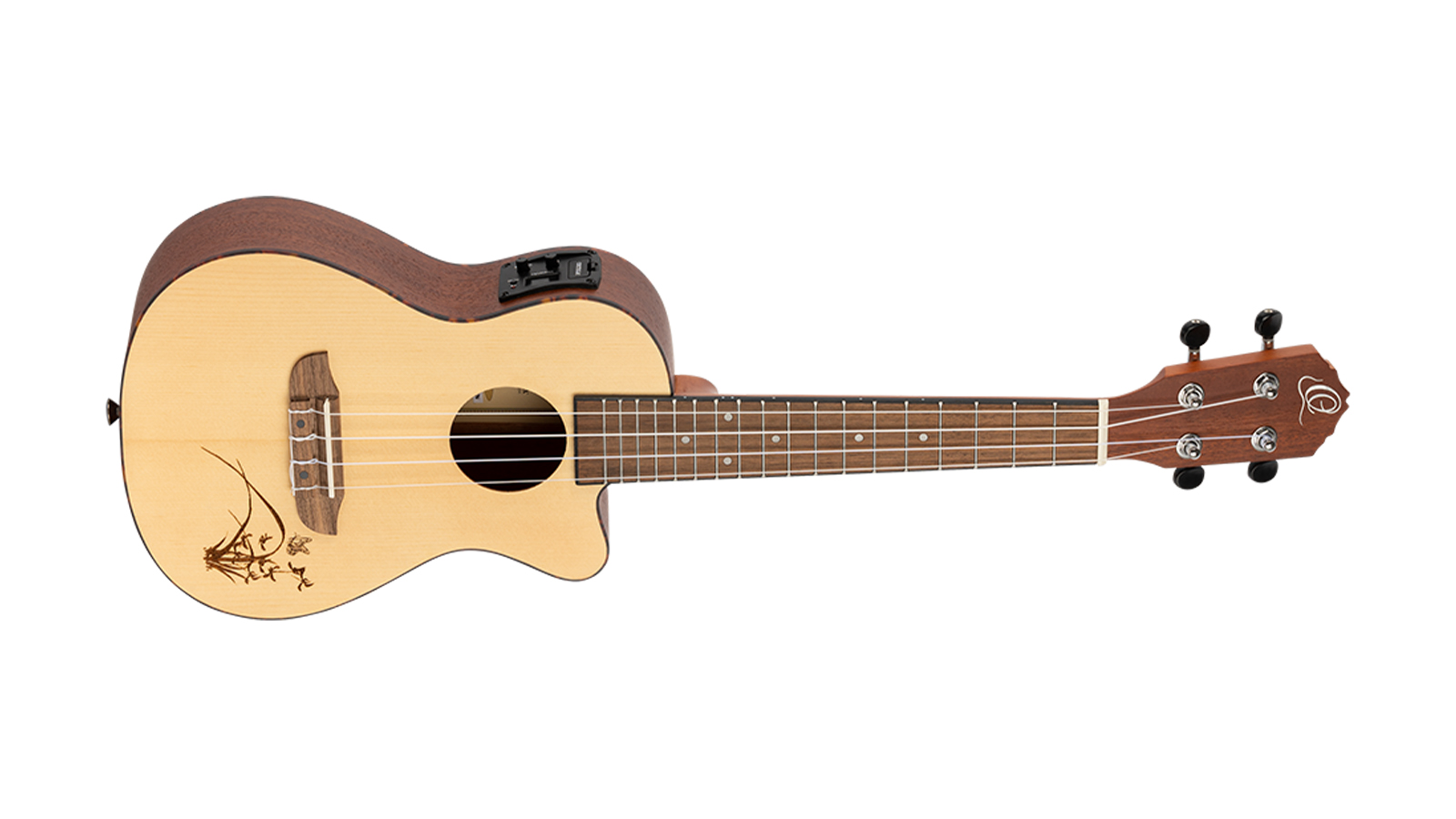
8. Ortega RU5CE
Our expert review:
Specifications
Reasons to buy
Reasons to avoid
Ortega takes its fun seriously. A lot of thought has gone into the cute RU5CE, and it shows. Many of the beginner ukuleles in this buyer's guide are all mahogany, which is a good choice, but it's refreshing to see the classic combination of a bright spruce top matched with the warm sapele back and sides.
Little touches, like the sealed machine heads, built-in tuner and the lightly applied finish that lets the natural wood grain through, demonstrate that somebody at Ortega cares.
The fretwork on our RU5CE is excellent, with even, carefully filed frets and no discernible buzzing. The walnut fretboard is smooth and fast.
The icing on the cake, at this price point, is the inclusion of an undersaddle Piezo pickup and accompanying MagusUke electronics.
Unfortunately, the laser etched Butterfly and Grass artwork on the bridge will prove a bit 'Marmite' to many. You'll either love it or hate it.
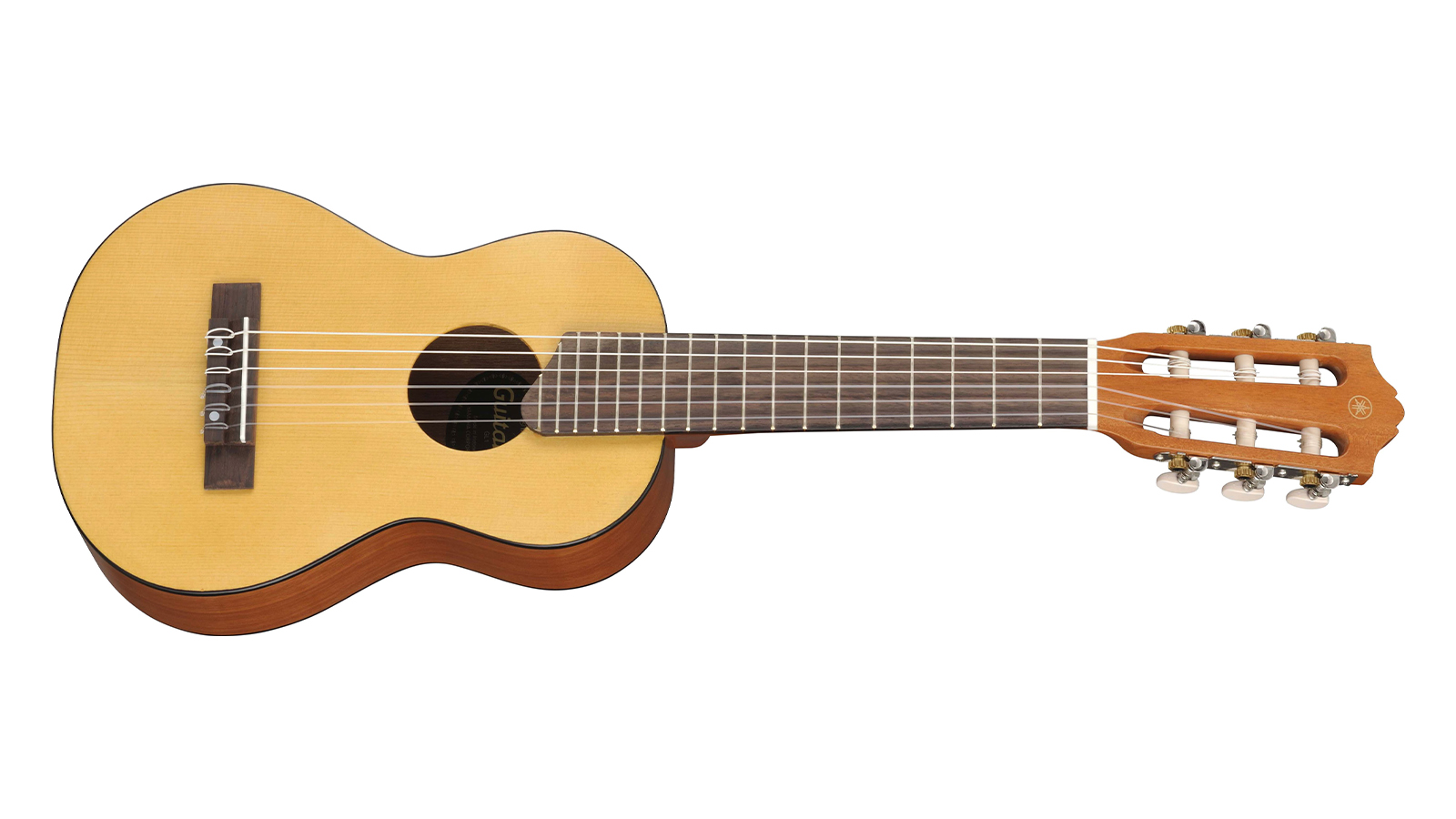
9. Yamaha Guitalele GL1
Our expert review:
Specifications
Reasons to buy
Reasons to avoid
The Yamaha Guitalele is a uke for the guitar player who doesn't like ukes. Or, more accurately it’s a mini-guitar, six strings 'n all, with a ukulele-sized footprint. If it sounds like we're being a bit negative about the Guitalele, we're not, it's actually very good.
There is however, no getting away from the fact that it's not really a ukulele. But that's OK. If you're a guitar player who craves a strong hint of that uke sound but doesn't want to have to learn a new instrument to get it, then the Guitalele is perfect for you. If you prefer the versatility that two extra strings bring, then the Guitalele scores again.
There's nothing to dislike about the Guitalele. It benefits from Yamaha's legendary build quality, its comparatively large size means that it sounds full, large and loud, and it's nicely specced with a spruce top, meranti (similar to mahogany) body and rosewood fingerboard. It can handle any repertoire a ukulele can, plus everything in your guitar songbook.
What's not to like? It's not really a ukulele…
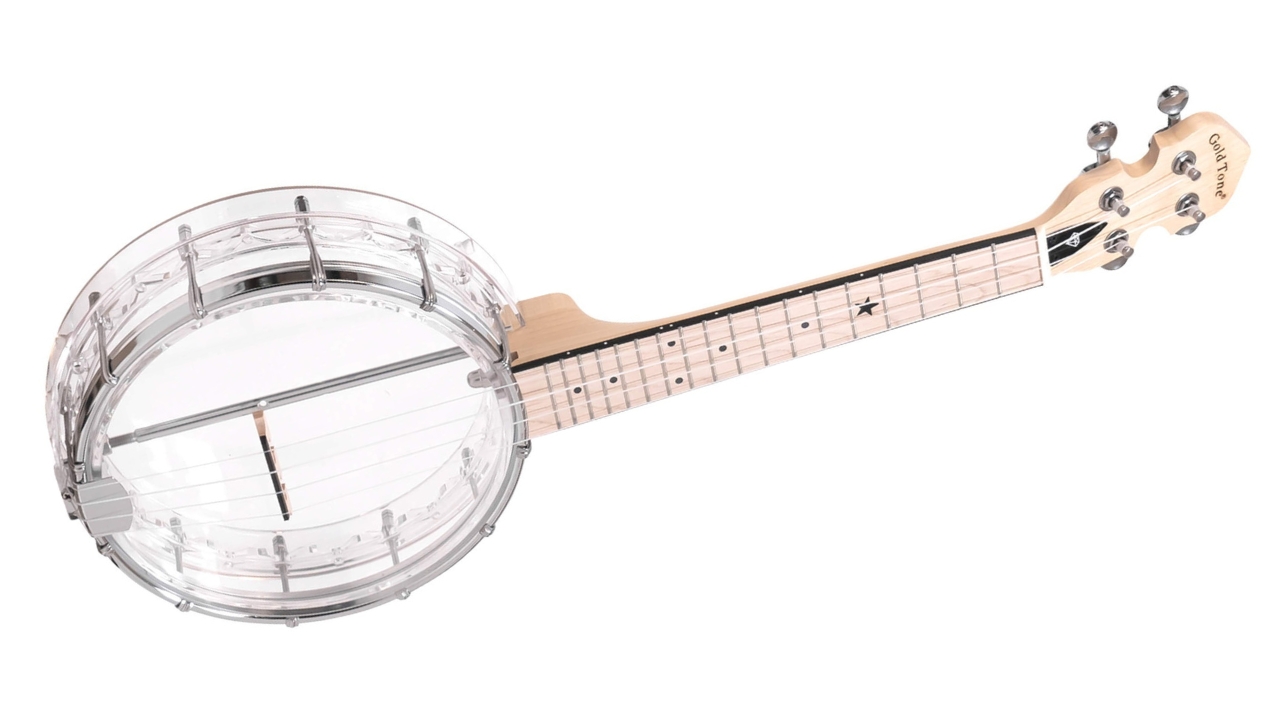
10. Gold Tone Little Gem Banjo Ukulele
Our expert review:
Specifications
Reasons to buy
Reasons to avoid
Gold Tone’s ‘Folkternative’ series offers something that is not usually associated with folk music: modernization. Known for blending instruments like electric guitars, mandolins, resonators and basses, the series’ most intriguing fusion for us is the banjo-ukulele combo.
The Little Gem banjo ukulele is ideal for the beginner starting out as it’s less expensive than other banjo-ukulele hybrids in the range. Made from brightly colored acrylic, it is incredibly eye-catching. Much like a banjo, the Little Gem is pretty loud with an impressive note projection, more so than a standard ukulele. Gold Tone is known in the folk music scene for good quality, and although affordable, the Little Gem doesn’t let this reputation down.
Available in striking colors like Sapphire, Ruby, Diamond and Amethyst, the Little Gem may not suit everyone's taste. However, if you're looking for a fun and vibrant ukulele to learn on, it could be just what you're after.
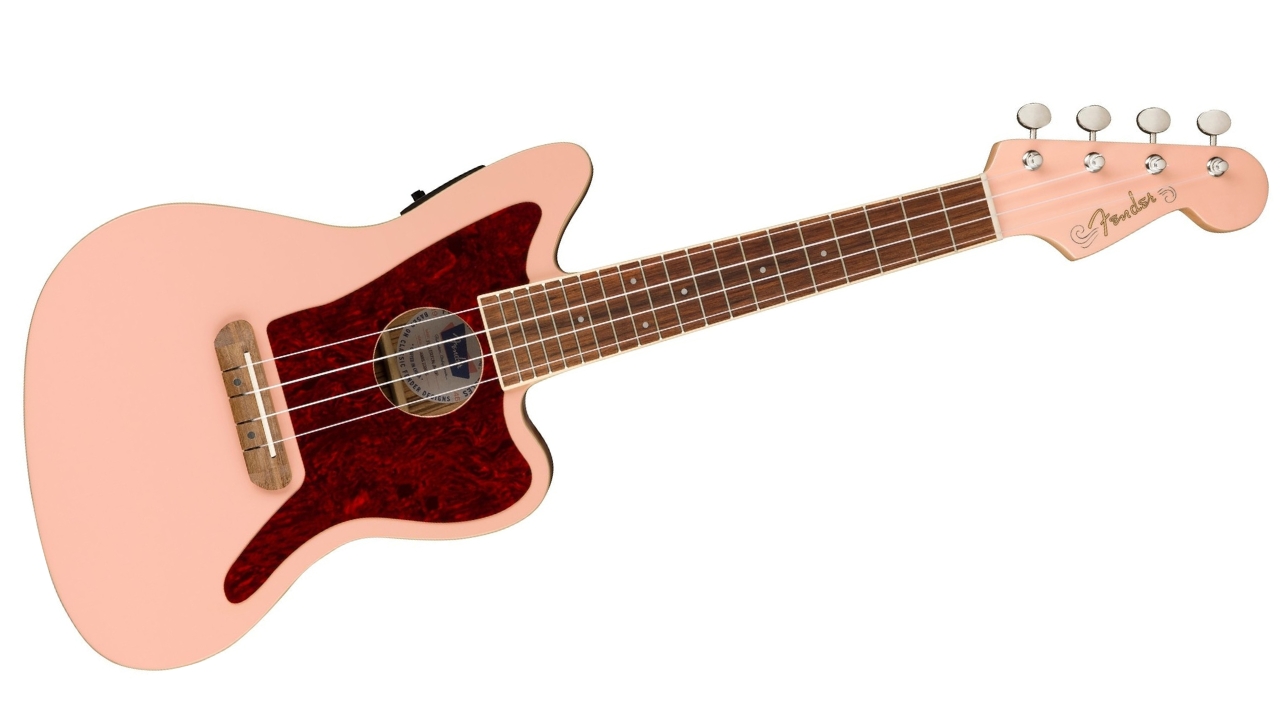
11. Fender Fullerton Jazzmaster Ukulele
Our expert review:
Specifications
Reasons to buy
Reasons to avoid
The Jazzmaster is the latest guitar-ukulele mashup released by Fender, and in our opinion, is by far the coolest. Available in either 3-Color Sunburst or Shell Pink, these things ooze offset coolness. If you’ve got a Dinosaur Jr fan in your life and their birthday is coming up, this Fullerton Jazzmaster ukulele should be the first thing you buy them.
There is a real premium feel to the Fullerton Jazzmaster, from the glossy bound maple neck to the vintage-style 4-in-line tuning machines, you feel that Fender has taken good care in creating these. Despite its quality, this ukulele comes at an affordable price of around $150. It offers great value for what's included and shouldn't deter beginners looking for an instrument that can grow with them up to intermediate level.
Also, much like its guitar brethren, you can amplify the Fullerton Jazzmaster if you wish. The Fender FE-U01 preamp sounds great through both acoustic and electric guitar amps, adding to its versatility. Of course, those wanting to replicate George Formby aren’t going to take to this Jazzmaster, but for those wanting something a bit more edgy, you can do a lot worse than this.
FAQs
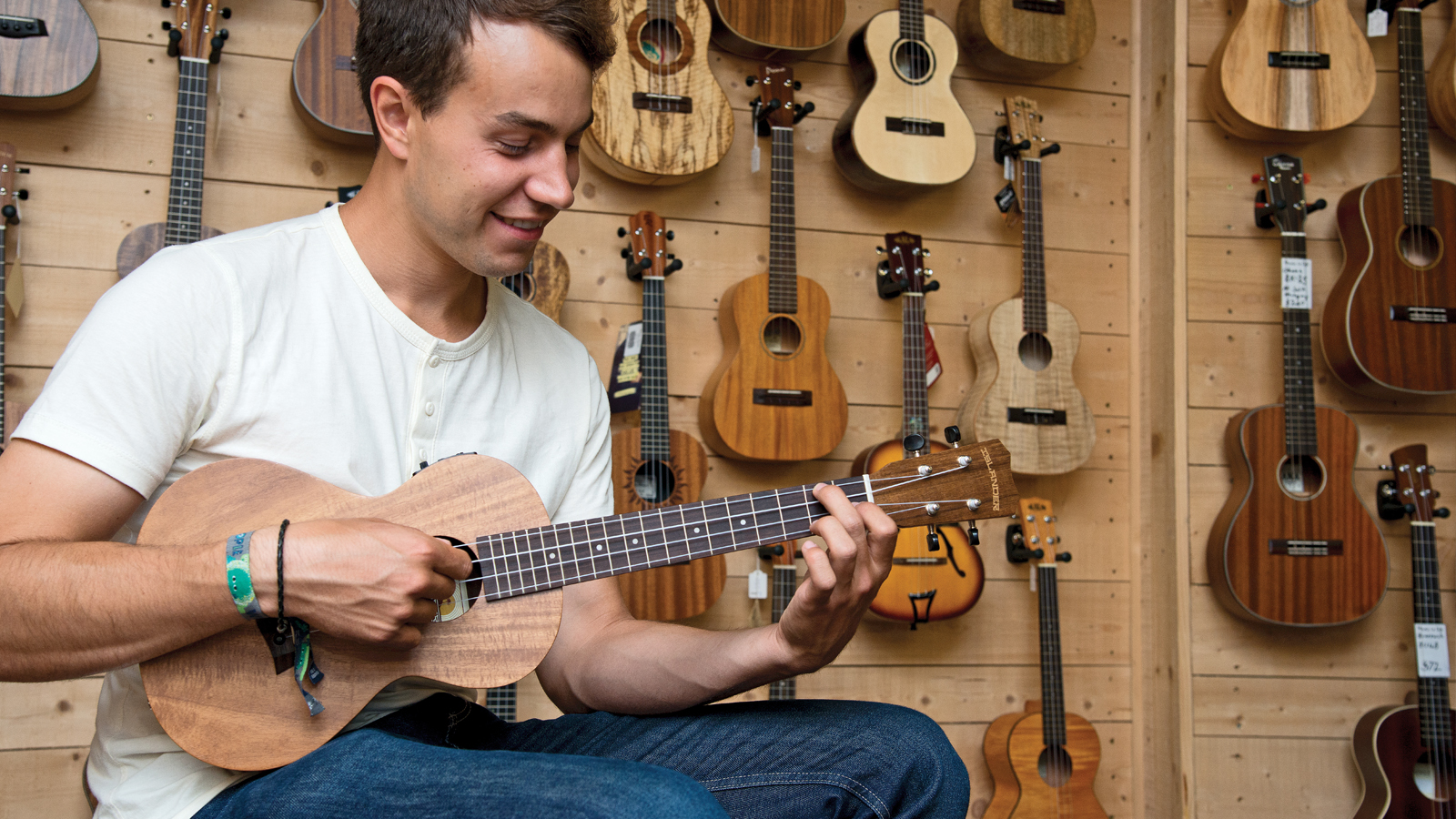
How do you tune a beginner ukulele?
Ukuleles are pretty easy to play, especially if you're already a guitarist, but there are some tuning quirks you'll need to get used to. The uke's four open strings are tuned to GCEA, which are the same notes you'll find on the guitar's four highest-pitched strings (the ones nearest the floor) at the fifth fret.
Or, looking at it a slightly different way, play the uke's strings at the seventh fret and you'll hear DGBE, which are the same notes as the guitar's open strings. This may sound complicated but it's really not that hard to get your head around once you've been playing for a short while.
If you do play the guitar, you'll be transposing notes, scales, chords and songs to your uke in no time. If you don't play the guitar then hey, there's nothing to relearn. Either way, it's all pretty simple once you get used to it.
What is re-entrant tuning?
Another tuning quirk has a complicated-sounding name – re-entrant tuning – but don't let that bother you. A stringed instrument like the guitar has open strings that get progressively higher in pitch as you pick them. The bass string, the one closest to your chin, is the thickest and sounds the lowest. The next string is slightly thinner and a bit (a fifth) higher in pitch. The next string is thinner again and higher still, and so on.
With the ukulele, what should be the lowest-sounding string (G) is actually tuned up an octave. It's still the same note (G), so chord shapes aren't affected, and it's a big part of what gives the ukulele its distinctive sound. Banjo tuning works similarly.
If all of this sounds way too complicated (give it time, and it won't) and you'd rather your playing experience was closer to that of the guitar then you may be better off with a guitalele instead. It's a similar size to a ukulele but strung just like a guitar with six strings. The fretboard interval map is the same except, just like the uke, its open strings correlate to a guitar capo'd at the fifth fret. In many ways, it’s the best of both worlds but what it gains in versatility it lacks in authenticity.
What size beginner ukulele is right for me?
Beginner ukuleles come in all shapes and sizes, with the most popular being soprano, concert and tenor. Baritone ukuleles are larger, with a deeper, fuller sound that's more like a guitar. In fact, because they lack the convenient size and distinctive tone of a ukulele, we'd recommend beginners avoid them but concede that they make a fantastic second instrument and do a wonderful job of filling out the sound of a ukulele orchestra.
Soprano
Soprano ukuleles are the smallest and most familiar instruments – they really are tiny! There's no standard sizing but they are typically about 21 inches (53cm) long with 12 frets and a 13.5 inch (34cm) scale length. They nail that plinky ukulele sound, can be inexpensive to buy and will suit most beginner players. However, their small size and scale length do mean that the frets are tightly spaced, which can be awkward for larger hands.
Concert
If you are blessed with long, chunky digits then you'll be better off with the slightly larger concert. A concert ukulele is just a bit larger at about 23 inches (58cm), with 18 frets and a 15-inch (38cm) scale length. The tuning is the same, so it will sound similar to a soprano but the fretboard spacing is a touch more generous. It trades that distinctive plinky tone for better midrange and bass response, and its larger body will be more resonant and louder.
Tenor
A tenor ukulele is a step up again at about 26 inches (66cm) long with 18 or more frets and a 17-inch (43cm) scale length. Once again, the fretboard is less congested, it has better dynamic range and more projection, but it won't sound as authentic as a soprano. Ironically, we're used to recommending instruments with more sonic depth, range and projection but in this case, only you can decide which sounds 'better'.
One thing's for sure, if the fretboard is too small to play comfortably then, after a week or two, your new uke will be discarded to gather dust. Buy the size you enjoy playing.
What wood is best for ukulele?
Visit any online guitar forum and you'll find exhaustive (and often exhausting) discussions about the qualities of various tonewoods, and how they influence an instrument's sound. Is it the same in ukedom? Yes, absolutely, but at the 'value' end of the market brands will be choosing wood based on cost, not tone.
Another lively debate will concern solid wood vs laminates, with the latter being the underdog. Solid wood, for tops, backs and sides, is nice to have but laminates can still sound fantastic, and save you a wad of cash.
Spruce
Spruce, a light-colored pine, is commonly specified for acoustic guitar and ukulele tops because of its bright yet full sound. It's the inoffensive do-it-all timber that reacts just as well to fingerpicking as it does strumming. Stiff and light, it yellows to a gorgeous, pale butterscotch shade with age.
Maple and cedar
Maple can be used for tops, backs, sides, necks – pretty much the whole instrument. It's much harder than spruce and has a clean, sparkly, transparent tone that can be strident but never harsh. Dense and heavy, it can be beautifully figured, but also yellows with age. Cedar has similar qualities to spruce but it's much darker in color and warmer in tone. Just like spruce, it's only used for tops.
Mahogany
Mahogany is a favorite of ukulele luthiers. Dense and dark reddish in color, 'hog' has an abundance of warmth and an emphasized midrange. Its 'woody' tone packs a powerful punch, and it will sustain seemingly forever. Mahogany is commonly used for tops, backs, sides and necks. Sapele, which is closely related to mahogany, looks and sounds similar.
Rosewood
Rosewood is perhaps the most commonly sought-after wood for the back and sides of a ukulele. A good piece of rosewood looks simply gorgeous. Rich, dark and embellished with swirling, rippling figuring, it takes gloss finishes particularly well. Fortunately, for us players, it sounds every bit as good as it looks right across the frequency range – a warm bottom end is balanced beautifully by transparent, zingy highs.
Koa
Koa is perhaps the ultimate wood for a ukulele, not least because it hails from Hawaii. It looks stunning, with a rich caramel color and complex figuring. It sounds pretty good too, but can be a touch bright at first, so you may have to wait a few years for it to mellow. Koa is typically used on the backs and sides.
Unfortunately, koa is desperately expensive, usually well beyond the budget of beginners and expert players alike. Still, it's good to dream.
How much should I spend on a beginner ukulele?
A decent ukulele will set you back about $/£50 to $/£100 and upwards. Spend much less than that and you run the risk of buying a toy, not an instrument. Your money should buy you a beginner uke that sounds good, has decent intonation and is easy to play. The neck should be straight, and there should be no sharp fret ends waiting to bloody your fingers.
Invest a bit more – $/£150 plus – and say hello to a world of enhanced tone, better playability, onboard pickups and more bling, such as decorative inlays. Part with a real chunk of cash, upwards of $/£2,000, and you'll be the proud owner of an heirloom piece no doubt handmade from the finest tonewoods.
So, what should you spend? For beginners who fancy larking about with a ukulele then $/£50 will probably suffice. For beginners who want to learn with intent, budget for $/£100 to $/£300 or perhaps a bit more if you can afford it. There's no rule insisting that beginners can't buy a pro instrument. It's worth knowing that concert and tenor ukuleles sell at a slight premium.
Do I need an electronic beginner's ukulele?
You may have noticed in our guide, or while browsing on your own, that some ukuleles come with built-in electronics. These features, like a pickup and preamp system, allow you to amplify the ukulele's sound. Generally speaking, a pickup isn't essential for learning the ukulele. Ukuleles are acoustic instruments and were originally designed to be played that way.
However, having an electro-ukulele may open some doors and give you more versatility. If you want to play live or with a ukulele group, being able to plug into an amplifier will make it much easier to be heard. Sure, playing live isn’t likely to be your first priority as a beginner, but if you see that in your future, having a pickup will help you achieve that. Additionally, having a pickup makes recording your ukulele easier, especially if you don’t have a recording microphone. If you’re planning on creating music, you may want to consider an electro-acoustic.
Lastly, many electro-acoustic ukuleles have built-in tuners in the preamp, which are incredibly handy when you need to quickly tune up.
How we choose products

Here at Guitar World, we are experts in our field, with many years of playing, creating and product testing between us. We live and breathe everything guitar gear related, and we draw on this knowledge and experience of using products in live, recording and rehearsal scenarios when selecting the products for our guides.
When choosing what we believe to be the best beginner ukuleles available right now, we combine our hands-on experience, user reviews and testimonies and engage in lengthy discussions with our editorial colleagues to reach a consensus about the top products in any given category.
First and foremost, we are guitarists, and we want other players to find the right product for them. So we take into careful consideration everything from budget to feature set, ease of use and durability to come up with a list of what we can safely say are the best beginner ukuleles on the market right now.
Find out more about how we make our recommendations, how we test each of the products in our buyer's guides and our review policy.
Related buyer's guides
You can trust Guitar World
- Best acoustic guitars for beginners
- Best cheap electric guitars under $500
- Best guitar tuners for acoustic, electric and ukulele
- Guitar accessories for beginners and beginner guitar gear essentials
- Best online guitar lessons for uke players and beyond
All the latest guitar news, interviews, lessons, reviews, deals and more, direct to your inbox!
When Simon's childhood classical guitar teacher boasted he 'enjoyed a challenge', the poor man had no idea how much he'd underestimated the scale of the task ahead. Despite Simon's lack of talent, the experience did spark a lifelong passion for music. His classical guitar was discarded for an electric, then a room full of electrics before Simon discovered the joys of keys. Against all odds, Simon somehow managed to blag a career as a fashion journalist, but he's now more suitably employed writing for Guitar World and MusicRadar. When not writing or playing, he can be found terrifying himself on his mountain bike.
- Matt McCrackenJunior Deals Writer
- Ross Holder

